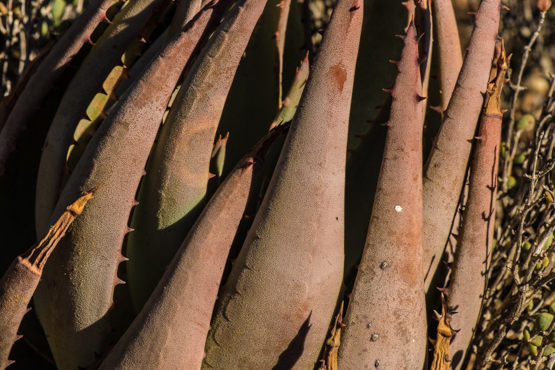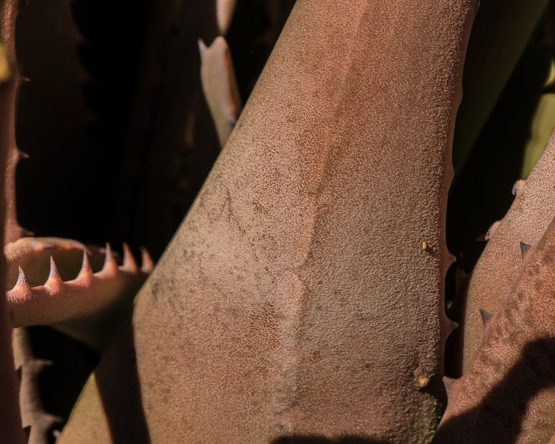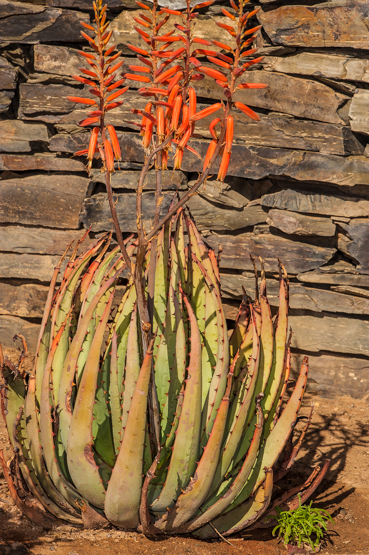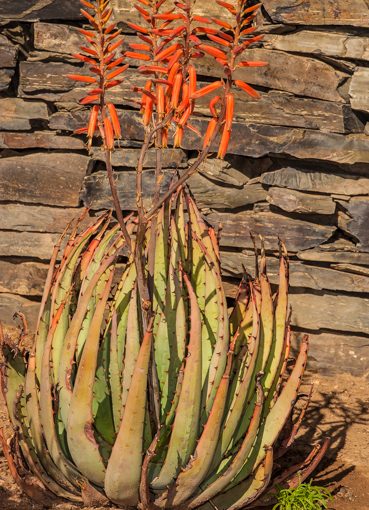Usually this species forms dense groups of 20-40 cm tall rosettes (stemless or short-stemmed), which face outwards and often almost lie on their sides.
Each rosette has about 20 incurved leaves of about 30×7 cm; they are green to greyish green and firm in texture, with rough, sandpaper-like surfaces and margins with reddish-brown teeth.
The nodding, 4 cm long flowers are dull red to pale scarlet (rarely yellow), appear in December and are arranged in branched inflorescences up to 60 cm tall.
This beautiful species occurs on arid, sandy flats from the Richtersveld to Loeriesfontein, Calvinia and Klawer. Unfortunately it does not thrive outside its natural habitat.
Falcata means sickle-shaped, referring either to the curved flower stalk or to the leaves curving inwards (both possibilities are mentioned in literature).
All pictures were taken just south of Vanrhynsdorp late July 2017, apart from the last one, which shows a plant growing near the office buildings of the Tanquana Nat. Park.






